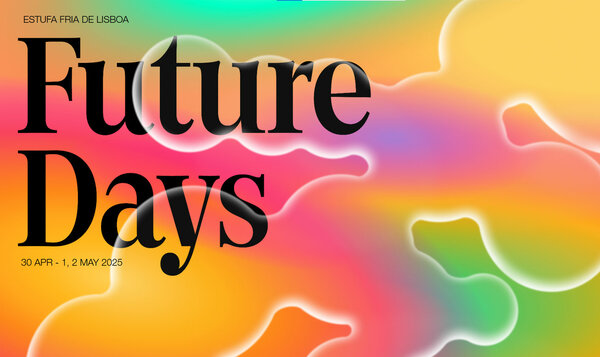Experiential marketing aims to engage consumers by creating unique experiences.

The potential of experiential marketing in virtual environments
Date
05 March 2025
The key word in this strategy is active audience participation: the benefits of a product or the values of a brand are not communicated directly but interactively, through a game, an event, or an immersive experience.
Although the concept of experiential marketing has been around for some time, digital potential and modern technologies, such as Augmented Reality and the Metaverse, have greatly expanded the possibilities on offer. Today, thanks to these innovations, experiences can be even more engaging, personalised, and accessible, opening up new and exciting opportunities for brands.
The role of the Metaverse in experiential marketing
Il The Metaverse is a three-dimensional virtual universe where users can interact with one another and with the surrounding environment in innovative and immersive ways. For experiential marketing, it offers an unprecedented stage to create new experiences that go beyond traditional physical boundaries.
Opportunities of the Metaverse for businesses
Though still evolving (it’s estimated that it will take another 5–10 years to reach a more advanced and complete stage), the Metaverse offers many opportunities for companies across different sectors. Some examples include:
- Virtual shopping: trying on clothes from home, as if in a store, using personalised avatars.
- Events and conferences: companies can organise immersive events, virtual trade shows and product launches that allow participants to interact realistically, regardless of their geographical location.
- Personalised brand experiences: brands can create unique virtual worlds where customers can explore products and services in an interactive, gamified setting.
- Training and onboarding: companies can develop immersive learning environments for staff training or customer engagement.
- New business models: selling digital goods (NFTs), offering premium subscriptions for exclusive experiences, and running interactive advertising within the Metaverse all provide new revenue streams for companies.
Challenges of the Metaverse
Despite its great potential, the Metaverse also presents a number of challenges, starting with privacy and security. The collection and management of personal data require clear regulations to protect users from potential breaches.
Another challenge concerns regulation and digital ownership, with ongoing issues related to intellectual property management, digital rights, and financial transactions within these virtual environments. Additionally, the user experience must be improved to ensure the Metaverse’s success, through better graphic quality, reduced latency, and the development of intuitive, user-friendly interfaces.
Gamification e customer engagement
Games are an extremely powerful form of communication: they capture attention, entertain, engage, and deliver messages without being intrusive or perceived as advertising.
Through gamification, companies can achieve a range of strategic goals, including:
- Teaching complex concepts in an interactive, engaging way.
- Educating audiences on topics of interest, improving understanding and awareness.
- Promoting products and services through playful dynamics that encourage interaction.
- Increasing employee engagement by boosting motivation and productivity.
Examples of gamification for companies
Cybersecurity goes interstellar: Google’s Space Shelter
Space Shelter is a Google video game designed to raise awareness around cybersecurity. Through a playful, immersive experience, the game teaches key concepts that are often seen as dull—such as recognising online scams and phishing, the importance of two-factor authentication, and the use of password managers for safer online browsing.
Learning languages has never been this fun: Duolingo
Learning a new language is definitely challenging, but gamification can make it a pleasant and motivating experience, reducing the perception of effort. On Duolingo, the level-unlocking system, virtual rewards, and daily challenges all encourage learning and help users stay consistent with their study routine.
Digital storytelling and visual arts
In experiential marketing, every application requires two essential elements for a successful strategy: digital storytelling and visual arts.
Effective digital storytelling brings coherence to the creative concept by structuring a narrative that captures the audience and conveys the message clearly. It should have a clear narrative structure and follow a consistent flow. The tone and language should align with the brand’s values and target audience, while distribution should take place on strategic platforms such as social media, websites, apps, or immersive experiences.
Visual arts, on the other hand, represent the visual side of the experience: including graphics, images, videos, and interfaces. The choice of colour palettes, typography, layout, and motion design should be carefully considered to strengthen the narrative and ensure a seamless, immersive experience.
Interaction design and interactive environments
When applied online, experiential marketing requires that interactive environments be designed to enhance engagement and customer satisfaction. This is where interaction design comes into play—aimed at optimising user-system interaction by combining usability, accessibility, and user-centred design principles.
An Interaction Designer analyses the customer journey to remove friction in the experience, select the right interaction patterns (such as dynamic scrolling, drag & drop, or gesture-based interactions), and implement elements that increase engagement. Additionally, the use of analytics and A/B testing allows for ongoing optimisation of the interface, improving key metrics such as time on site, conversion rates, and user satisfaction levels.
Want to dive deeper into the potential of experiential marketing and enrich your CV with these skills?
Explore IED’s training paths to develop your expertise in this field. If your goal is to create impactful visual identities, visual storytelling, and immersive content, the isual and Interactive Arts courses will equip you with the skills to work with images, video, motion design, and Augmented Reality. If instead, you want to design intuitive and engaging digital experiences, the programmes in Interaction Design and User Experience will teach you how to develop interactive interfaces, effective digital environments, and user behaviour-based solutions.








